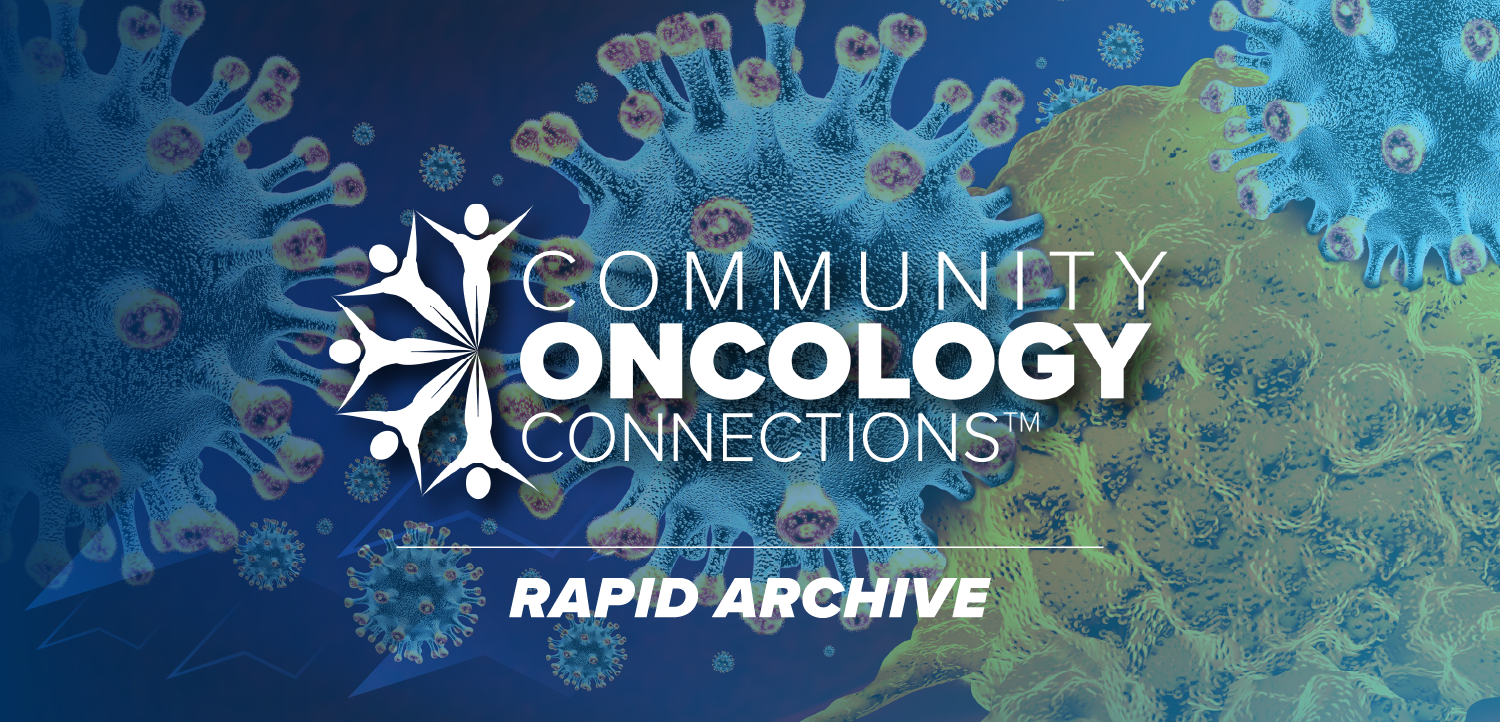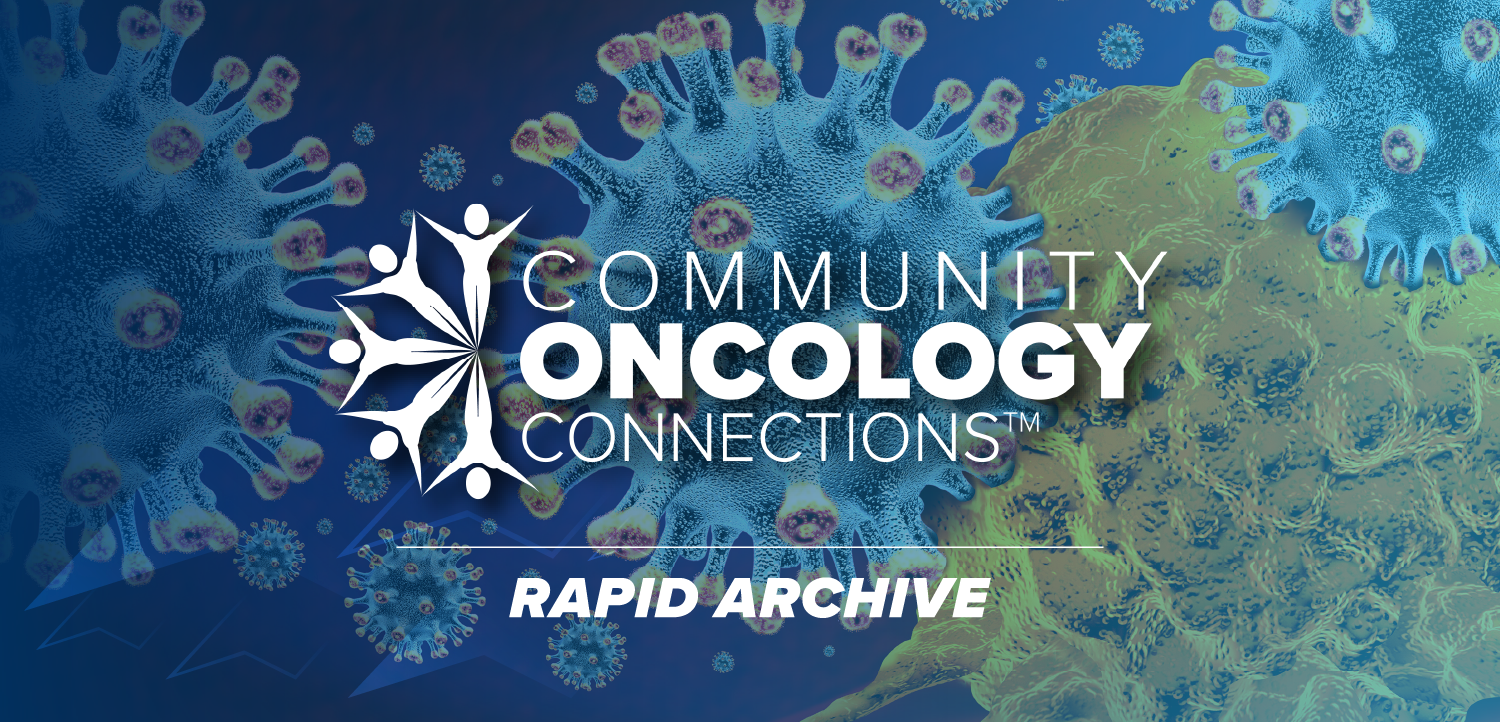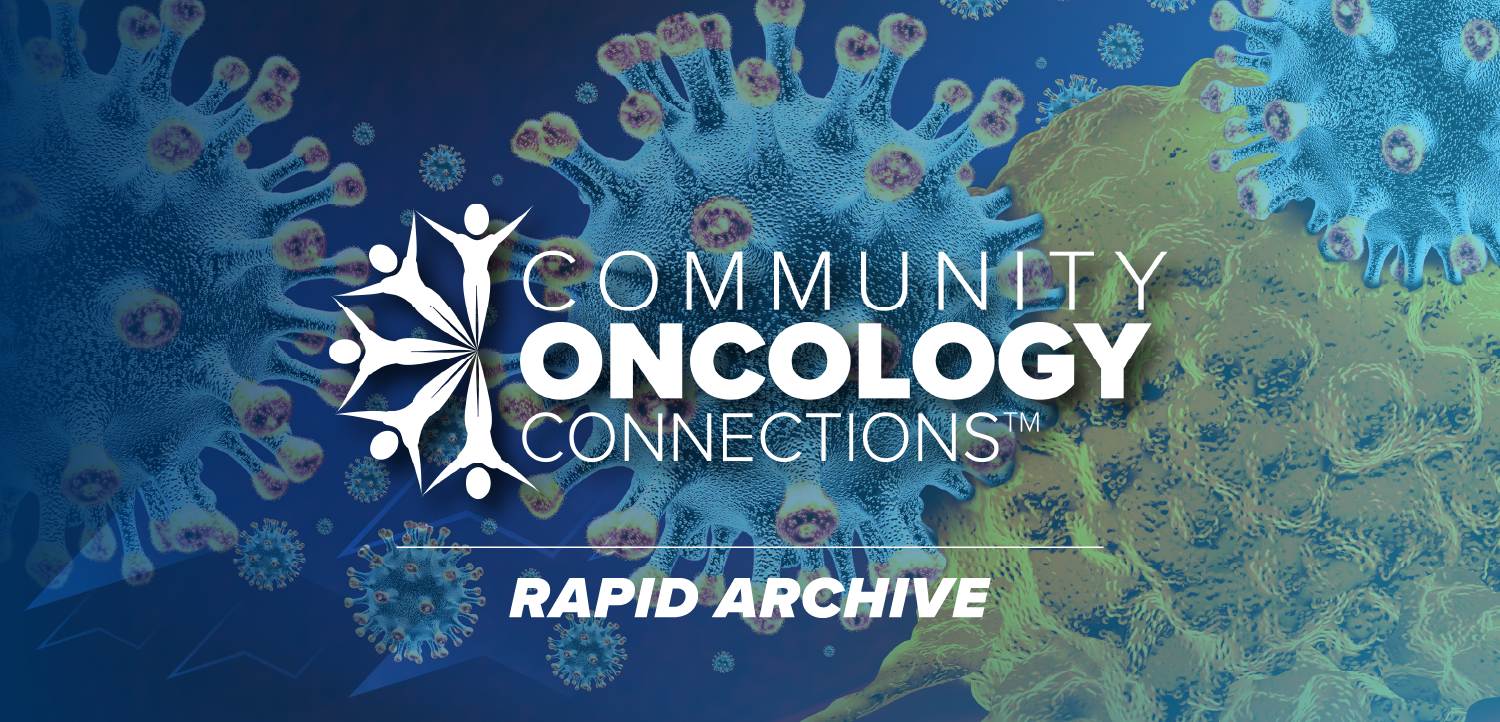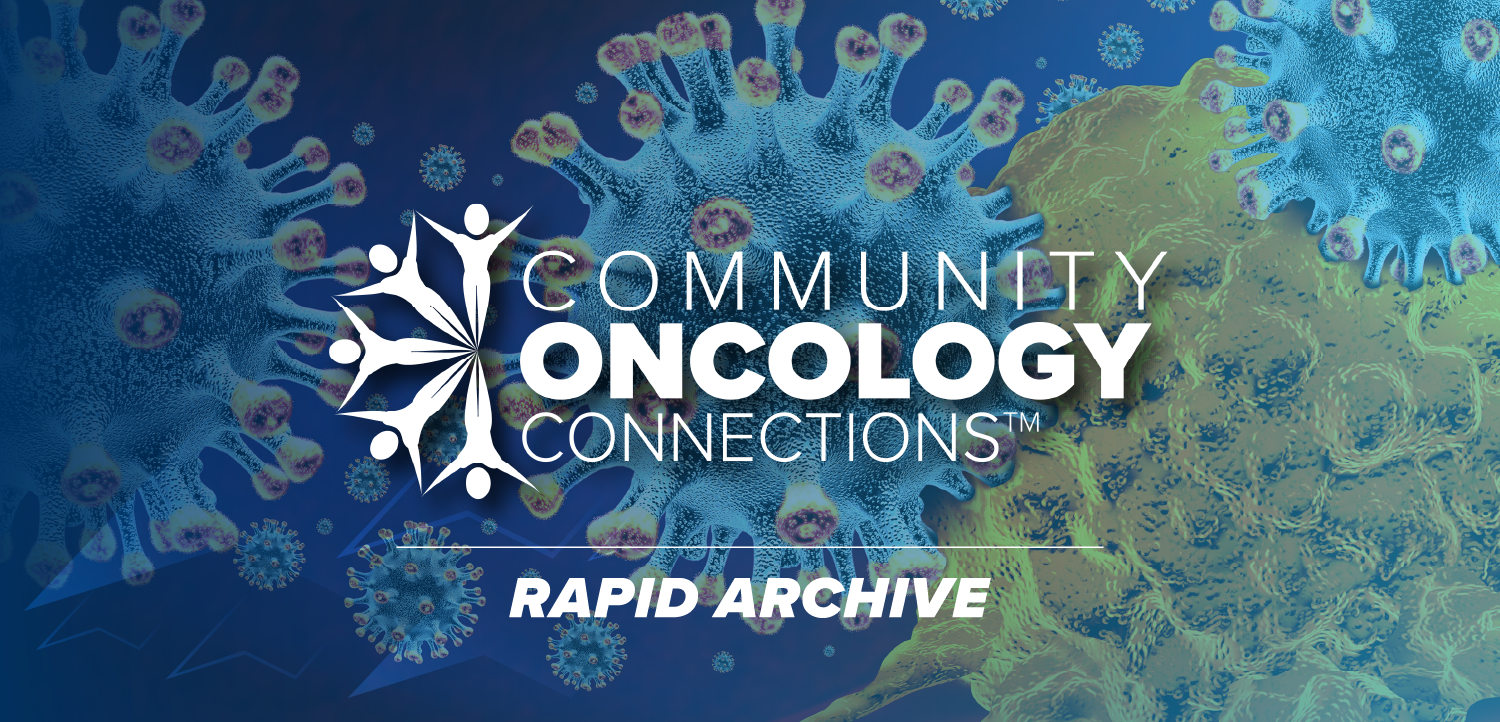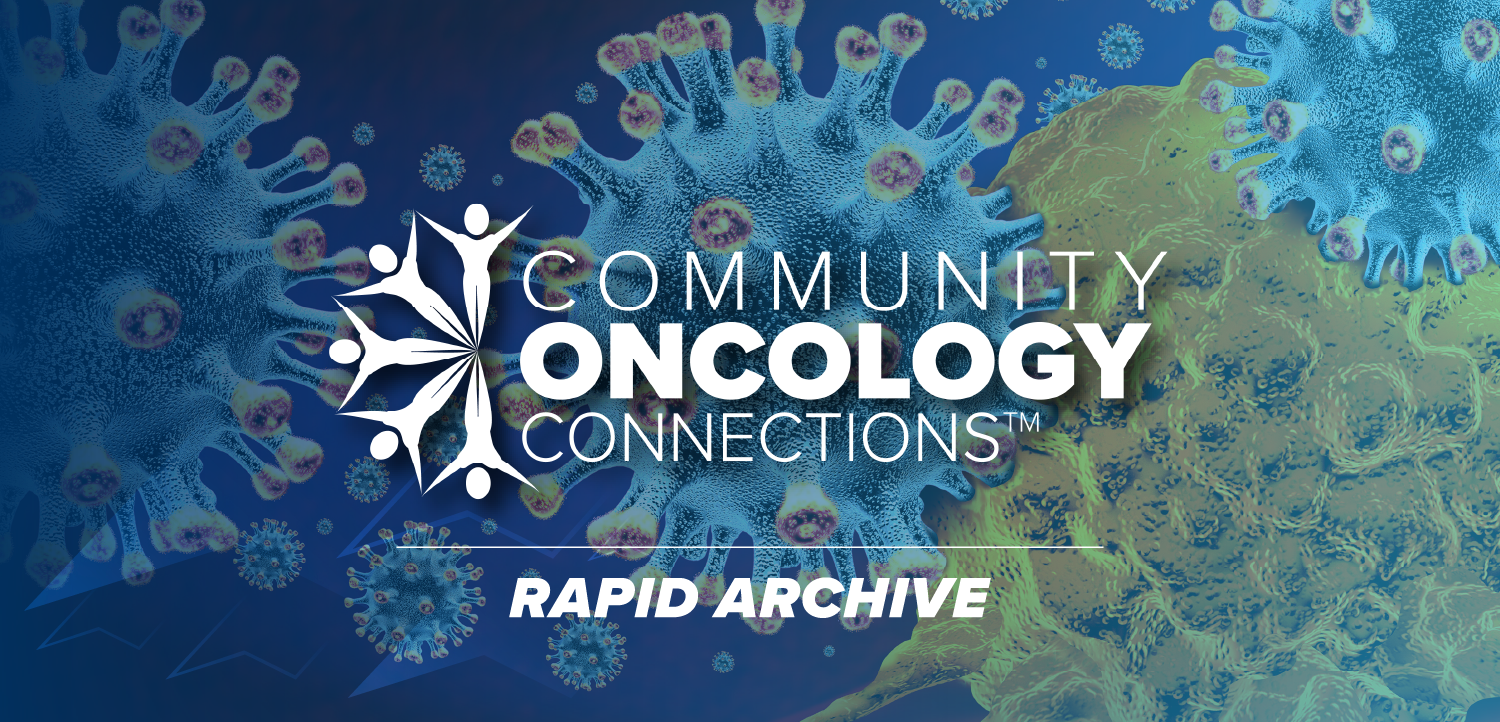
What Should Oncology Nurses Know About Biology-Guided RT?
Nurses should be familiar with PET scan protocol and what to ask patients with lung and bone cancers before administering biology-guided radiation therapy.
Because biology-guided radiation therapy (BGRT) combines PET technology with radiation technology, oncology nurses should be familiar with PET scan protocol and screening processes before administering treatment to patients with lung and bone cancers, said Samantha Bianzon, BSN, RN, a radiation oncology nurse at Keck Medicine of the University of Southern California in Newport Beach, California.
BGRT uses a radioactive glucose tracer to identify cancer cells, which will absorb more glucose than healthy cells. Bianzon emphasized that for this reason, nurses should counsel patients to avoid carbohydrates in the 24 hours leading up to BGRT.
Additionally, nurses should ensure patients are fit to receive BGRT prior to treatment. While coordinators do most of the screening required before a patient receives BGRT, Bianzon said that pulmonary function tests (PFT) are still necessary prior to treating patients with lung cancer. Likewise, nurses should be aware of mobility aids, contractures, and limitations to a patient’s ability to lie flat for up to 1 hour before treatment of patients with bone cancers.
Because BGRT must be delivered at a specialized
Oncology Nursing News: What is the utility of BGRT in cancer treatment?
Bianzon: This novel technology is a new option for patients with any stage of cancer. It can be from a tumor of the lung or tumor of the bone, from primary or metastatic cancer. This is the best option for patients who opt for a noninvasive approach.
Scintix therapy is a BGRT that uses real-time signals from cancer cells to target
What is the role of PET scans in BGRT?
The nurse or PET technician will start an IV [intravenous] line. The nurse can also access the port.… A small amount of radio tracer is injected into the patient’s bloodstream. It can only be injected intravenously. The radiotracer accumulates in certain areas of the body where there’s increased hypermetabolic activity.
There are different types of radio tracers. It depends on what is being investigated. It can be tech infection or tech inflammation, but for this one, the cancer cells tend to consume more glucose than any other normal cells, so they will absorb more of the radioactive glucose tracer. We use fluorodeoxyglucose (FDG) for BGRT or PET scans. We also call it radioactive glucose tracer.
Each cancer cell signals its own location using emissions. These emissions are radioactive particles that are released by the FDG. The brighter spots on PET scan image indicate where the cancer is. There are screenings and assessments that need to be done to determine if a patient is a good candidate for BGRT.
What patient education is necessary prior to BGRT?
Patients must follow a low-carbohydrate, high-protein diet for 24 hours before the scan. We are injecting FDG or radioactive glucose tracer, and carbs can be converted into glucose, so we don’t want to affect the glucose metabolism. Patients should avoid bread, pasta, rice, cereal, sweets, fruit juice, soda, dairy, and other high-carbohydrate foods. They need to drink plenty of water and avoid vigorous physical activity or vigorous exercise, because this leads to glucose uptake in the muscles. This will also affect glucose metabolism.
When we inject the radioactive tracer, patients cannot eat for at least 6 hours before their appointment. They cannot chew any gum or drink coffee. Patients can take prescribed medications—that’s usually OK. However, if the patient is diabetic, they cannot take diabetic medications. This will disrupt glucose metabolism, insulin production, all these sorts of things.
The process typically lasts 2 to 3 hours. That includes the injection and starting an IV line, then the patient needs to rest quietly on a chair for 45 minutes, and then the patient undergoes a scan. The treatment will take about 1 hour. After treatment, they will resume normal activity, and they must drink plenty of water to flush the tracer.
As an oncology nurse or APP working at a specialized facility, how do you build a rapport with patients being referred from their provider for treatment?
The coordinators or schedulers are the ones who retrieve the necessary reports from different facilities or hospitals, so [the nurse or APP] reviews the patient’s case 2 or 3 days ahead of time so that we know if the patient is a candidate. Before we ask them questions, we [tell patients], “This is your imaging. This is what we have so far. These are the things that your doctor told you, [for example,] you have to be scheduled for a pulmonary function test,” or any other testing the doctor has called for. We build rapport by having a presentation for them [about their case] before we ask them questions or do our assessments. We tell them what we know and show them that we reviewed their case. That’s why we make sure that all the necessary imaging labs are in before we meet the patient for a consult.
What testing should nurses and APPs ensure the patient has undergone before BGRT?
For BGRT, patients can have a prior PET scan or diagnostic test, but we’re still going to do our own PET scan here, and we also need to do a blood glucose test. If the patient has lung cancer, we need to do a PFT to determine their lung capacity and if they’re able to lie down on the table without any difficulty breathing.
For bone cancers, we need to know if they’re using any medical equipment, like a walker or a cane, if they have contractures, or if their capability to lie down on a table for 45 minutes to 1 hour is compromised. We need to know those things before we determine if the patient is a good candidate for BGRT, as well as their tolerance with IV injections, because they undergo many injections prior to each treatment.
This transcript has been edited for clarity and conciseness.





